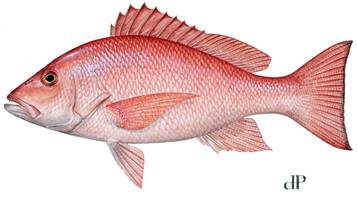Red snapper issues have been contentious in recent years, especially in 2013 when Texas, Louisiana and other Gulf states pushed back against proposed federal rules, urging that snapper regulation be left up to the discretion of states, citing scientific research supporting the stance.
Gov. Rick Perry and other Gulf state governors even went so far as to send a letter to Congressional leaders, stating that federal management of Gulf red snapper was evidence of a system that was “irretrievably broken.”
NOAA Fisheries later announced an increase in the allowable catch for red snapper, from 8.46 million pounds to 11 million pounds. The recreational quota increased from 4.145 million pounds to 5.39 million pounds and the commercial quota increased from 4.315 million pounds to 5.61 million pounds. That increase was the highest catch level the Gulf of Mexico Fishery Management Council can set without having to decrease the figure in subsequent years, and will remain in effect through 2014.
Invasive lionfish make themselves right at home on Texas coast. http://t.co/ZvBHYFGoRq
— Will Leschper (@TXOutdoorDigest) December 14, 2013
While the quota went up, the biggest issue facing red snapper fishing is the absence of accurate harvest data. Commercial anglers keep much more detailed records than captains who fish recreationally. However, federal fisheries managers have an eye on improving the scientific side of snapper fishing, implementing a two-year study in January aimed specifically at nailing down just how much snapper is brought overboard. Dubbed the Gulf Headboat Collaborative, the program allows only 20 federally permitted headboat captains to fish for red snapper and gag grouper all year as long as they have not exhausted their allocations for the species. Included in those headboats are fishing operations based out of Port Aransas.

Those captains must adhere to their specific allocations and strict data collection, including reporting their trips electronically before conducting an outing, providing a time of return and then completing a log of their catch through the Headboat Survey online system, which will keep a running tally of landings, estimated in pounds after being formulated for the average fish size in each Gulf area.
One major caveat to the initiative is the quota and how long it takes to reach it. Red snapper landing estimates in Texas waters, those less than nine nautical miles off the coast, are included in the federal estimates and once the overall allotment is landed, even those captains in the Collaborative would be forced to shut down their trips. Those overall estimates typically are provided by federal officials in August.
This year’s recreational red snapper season will open at 12:01 a.m. June 1 and close at 12:01 a.m. July 11, offering a 40-day season in federal waters. The recreational red snapper bag limit in federal waters is two fish at least 16 inches in length. The bag limit in Texas waters is four fish, at least 15 inches long, with a year-round season.
Ever heard of "ghost fishing?" It's when derelict crab traps continue to catch and kill marine life. Help stop it. http://t.co/GTfFQKACIJ
— Will Leschper (@TXOutdoorDigest) February 6, 2014
More than 95 percent of the red snapper landed in Texas come from federal waters, according to Texas Parks & Wildlife Department figures. Most of that catch – about 80 percent – comes from headboats, also known as “party boats,” which take out numerous paying clients. These boats account for roughly 200,000 angler fishing trips annually, according to TPWD figures.
The length of the federal recreational season in the Gulf is determined by the amount of the quota, the average weight of fish landed and estimated catch rates. NOAA Fisheries is responsible for ensuring the entire recreational harvest, including harvest in state waters, does not exceed the recreational quota. Therefore, if states establish a longer season or a larger bag limit for state waters than the federal regulations allow in federal waters, the federal season must be adjusted to account for the additional harvest expected in state waters.
The long and short of the program is that it will allow headboats in the Collaborative to catch the same number of fish they would normally catch during the short fishing seasons, but to take anglers fishing anytime during the calendar year.
Let’s hope their efforts can be counted on as fisheries managers seek a better way to manage vital species across the Gulf.
Texas surf fishing excellent during fall, winter for multiple species. http://t.co/3TjXOsKtnk
— Will Leschper (@TXOutdoorDigest) December 16, 2013


















